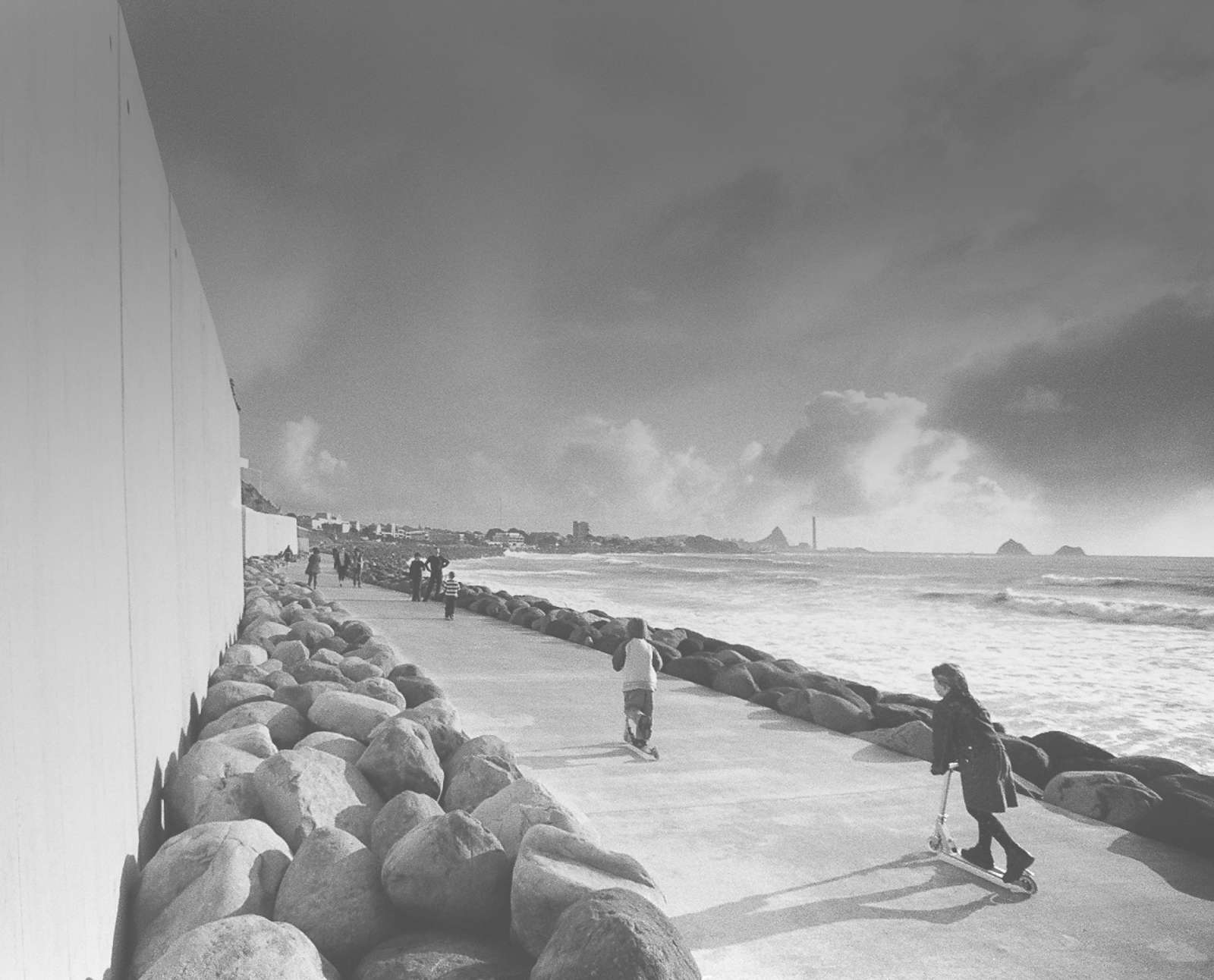New Plymouth's wild west walkway two decades on
Travel guide Lonely Planet named Taranaki as one of the best regions in the world to visit for 2017. It’s got the show-stopping Len Lye Centre, legendary surf beaches and an imposing, snow capped mountain.
But landscape architect Richard Bain would argue one of the biggest tourist attractions is New Plymouth’s coastal walkway. Now nearly 20 years old, it’s used by tens of thousands of locals and visitors a year. Nestled into the shoreline it stretches 11 km from Port Taranaki in the west, to Bell Block beach in the east, with plans to extend it further to Waitara.
Photo credit: Rob Tucker.
“The thing I’m proudest of is that people really do love it and use it,” says Richard Bain, who lives in New Plymouth. “If you go down there on any day of the week it will be full of people.”
He’s also really proud of the design aesthetic he and collaborators Isthmus came up with. “We spent a lot of time trying to decide what design aesthetic to use because unusually our coastal edge is really wild with big seas. There’s a lot of wave action. When we looked at other coastal walkways around the world they are mostly on benign bits of water. We wanted a design aesthetic that was robust but also maximised the coastalness with no clutter. So in the end it was a really simple design, a sort of ribbon with a lot of activity attached to it.”
Photo credit: Colleen Tunnicliff
Isthmus’ David Irwin says it was really important that the design responded to the wild west coast. “This was black, grey, solid and heavy, dangerous even, so whatever we were doing needed to respond positively to that. We wanted to be able to walk out and be proud (of the west coast) and be wind blown if we needed to be, and enjoy the quiet sunset when those days arrived, but (whatever the weather) we wanted to get out there and be in it.”
Photo credit: Colleen Tunnicliff
The landscape architects worked closely with Tonkin & Taylor’s coastal engineers. “There was a lot of understanding of what the coastal environment was about, of how high we were above water and how much separation there was between us and the water. For example the further we were away from the water the lower we could be. Also the size of the rocks and how we did the rockwork was an important consideration.”
Photo credit: Colleen Tunnicliff
There are no patterned pavers, just volcanic rocks, timber and textured concrete, accompanied by chunky seating elements, and galvanised steel balustrades - materials that stand in stark contrast to those found in more cosmopolitan waterfront upgrades.
There’s no upstanding wall along the seaward edge for people to sit on either. “We deliberately didn’t want to do that,” says Bain. “Our walkway runs seamlessly across, and the site furniture is really pushed to the back side of it. We really wanted it to be about experiencing the coast and not the walkway per se.”
You’ll also find one of New Plymouth’s most distinctive pieces of public art there - a 45 metre Wind Wand, designed by internationally renown kinetic sculptor Len Lye. The red fibreglass tube stands vertical in still air but bends in the wind - and there’s no shortage of that. “We worked with the Len Lye trust on that,” Irwin says. “Originally they wanted to put it on a hill but we said it was perfect for representing the west coast with the wind and sea.”
Photo credit: Colleen Tunnicliff
The project is still evolving. Initially it was to be only six kilometres of pathway and boardwalk in front of the central business district. But with the public embracing it so enthusiastically the council decided to extend it another five kilometres. And as mentioned, there’s talk about taking it all the way to Waitara.
Bain has been involved with the project since 1998 and still consults on it today. “It’s put us on the map to be honest. It’s now the jewel in the visitors' crown. When people come to New Plymouth the one thing they do is the coastal walkway and there’s massive community ownership of it.”
David Irwin says it’s the first walkway of its kind where a city has invested in a serious piece of amenity-driven infrastructure that has delivered a “city-changing" outcome. It started as a coastal walkway and ended up being a piece of infrastructure that changes the way a city sees itself. It’s given the city an identity. It has empowered people to show off their city. I don’t think we ever perceived it would unleash such pride.”
Client: New Plymouth District Council
Landscape Architecture: Bluemarble (was Richard Bain Landscape Architects), Isthmus
Consultants: Tonkin & Taylor, Apex Consultants
Contractors: Fletcher Construction,
Kerb & Driveway Specialists: Whittaker Civil Engineering




